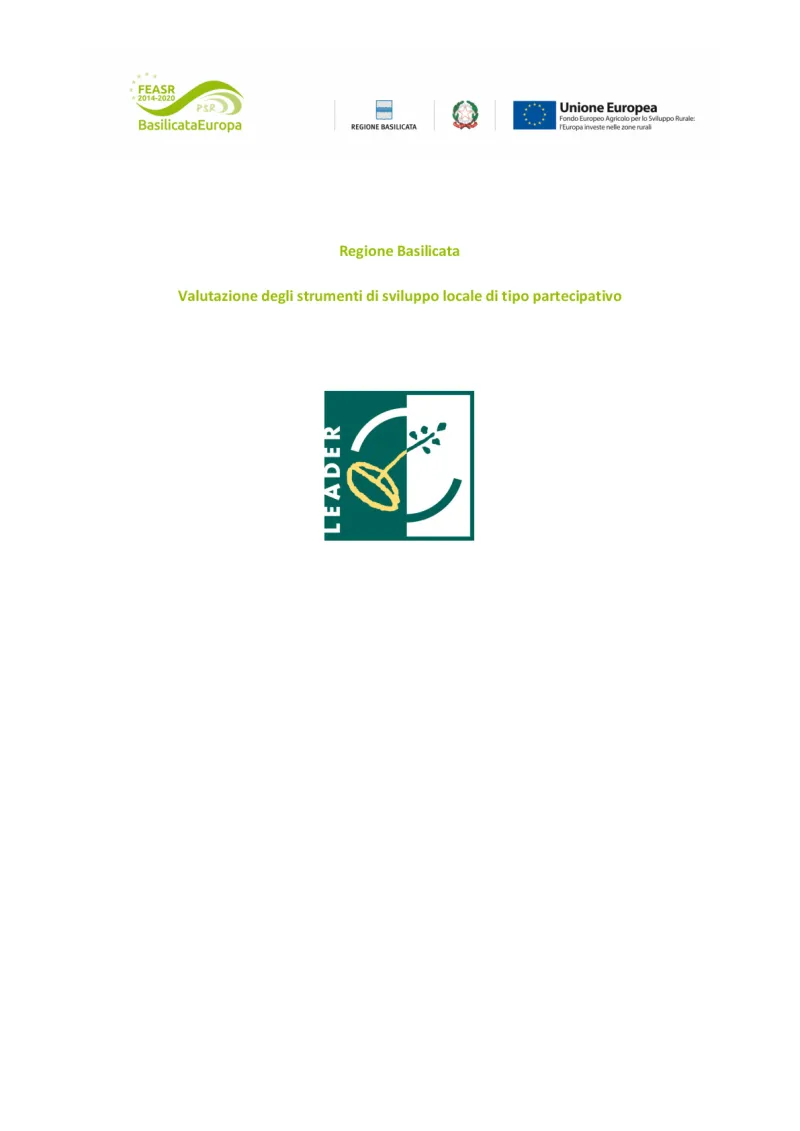Évaluation des outils du CLLD en Basilicate
- Évaluation
- LEADER
- Vision à long terme pour les zones rurales
- Impacts socio-économiques
- Impacts transversaux
- Conclusions de l'évaluation
Le rapport concerne l'évaluation de la stratégie LEADER (l'outil de développement local mené par la communauté (CLLD)) du programme de développement rural (PDR) 2024-2020 de la région Basilicate et couvre la période de mise en œuvre 2018-2022.
- Italy
- 2014-2022
- Cross-cutting impacts


L'évaluation, publiée en 2023, vise à analyser et évaluer l'approche LEADER et l'approche prévue dans la stratégie nationale pour les territoires intérieurs (NSIA). Les ressources du FEADER allouées à la NSIA correspondent à 7% de l'enveloppe financière des mesures structurelles du PDR et s'ajoutent à celles allouées dans le cadre de la mesure 19 de LEADER.
Les questions d'évaluation portent sur l'impact sur le développement économique du territoire, la participation des acteurs locaux, la capacité de collaboration et de développement de la communauté et le contexte local, la relation entre la stratégie principale actuelle et la NSIA, et les domaines d'amélioration de la stratégie principale.
L'approche méthodologique de l'évaluation combine une analyse documentaire des plans, programmes et données de suivi liés à la stratégie CLLD (LEADER) avec une analyse de terrain axée sur quatre GAL, réalisée à l'aide d'un questionnaire.
L'analyse sur le terrain visait à collecter des informations relatives à :
- l'amélioration du capital social et humain, qui garantit à la communauté une plus grande résilience et une meilleure capacité d'adaptation au changement ;
- l'amélioration de la gouvernance locale grâce à l'implication dans le processus de prise de décision de la communauté et des parties prenantes ;
- l'amélioration des résultats des projets grâce aux facteurs suivants : un effet de levier accru, une plus grande durabilité des projets, de nouveaux promoteurs de projets et des projets plus innovants au niveau local ;
- la relation entre la stratégie NSIA et la stratégie LEADER.
L'évaluation conclut, entre autres, que l'impact sur le développement économique des territoires est largement positif, compte tenu également du fait que certains GAL ont démarré avec du retard. En outre, les emplois créés contribuent directement à la réalisation de l'objectif — 26 emplois ont été créés selon les informations recueillies par le biais d'un questionnaire.
L'évaluation montre des résultats très positifs en termes de collaboration et de développement communautaire. L'effet de levier généré est particulièrement élevé dans les zones les plus reculées. Cela signifie que la capacité de conception et de collaboration fonctionne généralement lorsqu'elle est proche, en particulier dans les micro-contextes et les petites communautés.
En ce qui concerne l'intégration entre la stratégie LEADER et le NSIA, la conclusion est qu'il y a une intégration positive entre les deux : selon les répondants à l'enquête, seulement 10 % des interventions mises en œuvre sont considérées comme se chevauchant, tandis que toutes les autres sont considérées comme complémentaires ou intégrées. Selon les GAL interrogés, plus de 90 % des interventions sont intégrées et complémentaires.
Enfin, les propositions d'amélioration des GAL liées à la stratégie LEADER recueillies montrent une volonté de simplifier les procédures en donnant aux GAL plus de flexibilité et de capacité à agir sur le terrain.